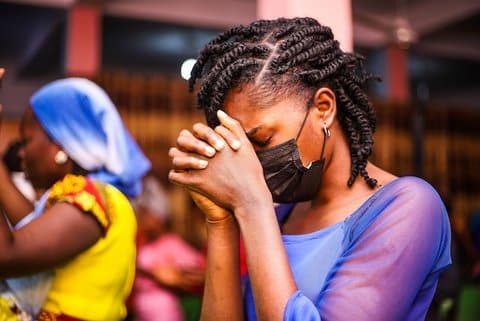
06 May Asian Teens Say Dating Violence a Taboo Topic at Home

(Photo by Sinitta Leunen on Unsplash)
By Julia Tong, AsAm News via Ethnic Media Services
When Angela Kim first fell in love at 16, teen dating violence was the last thing on her mind. Her boyfriend showered her with love, and she was infatuated with their whirlwind romance.
But then, she recalls, things suddenly started to change: Insults, manipulation tactics, and eventually physical violence escalated into a three-year-long abusive relationship.
“All these compliments started to turn into insults. And all of the great times we had together were now being overshadowed by his violent bursts of anger,” she recalls. “The signs of abuse, the signs of my relationship being unhealthy, were pretty quick in the relationship.”
Kim is not alone, nor are her experiences unique. According to Youth.gov, 69.5% of women, and 54% of men, reported experiencing intimate partner violence before the age of 24. As many as 76% of teens reported experiencing emotional and psychological abuse in relationships.
Today, Kim is turning her “pain into passion,” devoting her professional life to domestic violence prevention work at the L.A. County Department of Public Health and other community organizations. Many people she talks to, she says, do not understand the nature of abuse, and how abusers are able to keep victims under their control.
“I’ve heard questions like: ‘How do you stay with someone who hurts you like that?’ ” she says. “And my response has always been, an abuser is so incredibly good at changing your logic to the point where your reality is not your own anymore.”
Per activists, extensive social media usage amongst teens creates unrealistic pictures of what a “perfect” romance is, and enables some manipulation tactics—such as forcing the victim to unfollow all other people of the same gender. Pop culture frequently romanticizes violence in films like “365 Days.” Depictions of domestic violence are limited — often to white adult women suffering physical abuse — preventing teens from recognizing signs of abuse in their own lives. And most schools have minimal courses teaching students red and green flags in relationships, signs of abuse and consent.
“There’s a reason why coercion, intimidation, degradation all work in tandem… in an abusive relationship”
AsAmNews spoke to advocates and experts, including those on an Ethnic Media Services panel featuring youth activists, to understand teen dating violence in the Asian American community, its signs, and how to ultimately prevent it.
These signs of abusive relationships are often not discussed in families or taught to youth, preventing victims from even recognizing that their relationship is abusive. And many other factors impact the prevalence of dating violence in teens specifically.
The COVID-19 pandemic only worsened these existing issues. Armaan Sharma, a student activist from Safe Alternatives to Violent Environments, observed that quarantine and isolation caused major increases in mental health issues and social media usage in teens, which changed the ways dating violence manifests.
“Just as COVID has been evolving with all its new variants, teen dating violence has as well,” he says.
“We scrambled for a vaccine, so we should be scrambling for more prevention.”
An open and respectful dialogue on dating and relationships between parents and teens is key to keeping kids safe in their relationships, says Armaan Sharma.
Kim’s abuser, she said, used common abusive manipulation tactics to keep her entrapped in the relationship. These included “love bombing,” or showering the victim with overwhelming amounts of affection; controlling the victim through violence, anger, and jealousy; monopolizing the victim’s time, preventing them from maintaining (non-romantic) relationships with others; or insulting them.
The result is a total breakdown of the victim’s self-worth, self-esteem, and confidence.
“What people fail to understand is that manipulation tactics work. There’s a reason why coercion, intimidation, degradation all work in tandem… in an abusive relationship,” she says.
These tactics culminate in a “cycle of domestic violence” that frequently keeps victims trapped in abusive relationships, she says. The cycle begins with a tension-building phrase, where the victim feels like they are walking on eggshells to prevent the abuser from becoming angry. But a violent incident inevitably happens. Afterward, however, the abuser will apologize and reconcile with the victim. This honeymoon phrase reminds the victim why they fell in love with the abuser; the abuser will also show remorse and accountability, such as giving gifts or promising to go to therapy. Instead, however, the cycle repeats.
As a result, the victim will continue to stay with the abuser, convinced that the violent incident was a one-off event. And even if the victim decided to leave, Kim says, they would face danger, as the abuser will try to keep them in the relationship.
“Parents.. need to understand that dating is something that could potentially be inevitable.”
Asian American teenagers face additional barriers to open discussions around dating, consent, and intimacy.
Many Asian American teenagers who are children of immigrants may find it especially difficult to report dating violence. They may feel especially pressured to succeed and show the positive parts of their life. The issues their parents faced coming to America seem to “outweigh” their own relationship issues.
Immigrant parents may also be unfamiliar with where to even report teen dating violence when it happens. And language differences can make it difficult for teens to even explain what’s going on.
“How do you translate terms like domestic violence or love bombing or gaslighting into this language? It’s hard,” Kim says. “It’s already such a sensitive topic, and you don’t know how your parents are going to react.”
This lack of discussion is also prevalent among cultures with dating taboos, such as the South Asian community, says Sharma. He observes that though Indian parents in America are generally more open to dating, there is still a “lack of dialogue” about relationships and teen dating violence.
“Parents, especially South Asian parents, need to understand that dating is something that could potentially be inevitable,” says Sharma. “That’s where education about relationships and team dating violence comes in, because I’m sure parents would rather have…children in safe relationships rather than unsafe relationships.”
The broader environment of anti-Asian racism also plays a significant factor. East and Southeast Asian woman, for instance, are often hyper fetishized and viewed as submissive to violence and abuse.
However, the foundations for teen dating violence and abuse are also laid within the home. Many Asian elders don’t show intimacy or discuss romantic relationships at all. But Kim points out that domestic violence — especially against women — is normalized and under-discussed. And when abusive tactics are viewed as a natural part of romantic relationships, they can be especially difficult to unlearn.
“A lot of women growing up seeing their own mothers get abused — they think it’s normal because they never leave,” says Kim.
“And so when you’re experiencing something (like an abusive relationship) yourself, you’re like, ‘this must be normal. This was what love is. This is what marriage is, what a relationship is.’ And a lot the onus of undoing harm… is put on women.”
All of those factors make it difficult to start essential dialogues around intimate partner violence. Kim says that the Asian American community is one of the most difficult for her to have conversations with. A central reason why was judgment: When she shared her story, for instance, it was often used as gossip or as an example of why children should avoid relationships or sex before marriage entirely.
“Instead of treating my story with compassion and care, you know, my story was this example of why not to engage in various behaviors,” she recalls.
“Teen dating violence takes a village. It’s not the burden of the teenager to carry.”
Megan Tanahashi, communications director at the California Partnership to End Domestic Violence, says teens understand the experiences of their peers better than adults, making them excellent advocates for violence prevention.
Advocates say that the key to combating teen dating violence is prevention.
Parents play a critical role in intimate partner violence prevention efforts. Kim recommends that parents begin teaching children about healthy boundaries and consent as early as they can. Middle school is the ideal age to initiate conversations about relationships and intimacy. Doing so ensures that teens feel comfortable opening up to their parents about any harm they experience.
However, Kim stresses, parents are not the only trusted adults who can intervene in teen dating violence.
“It’s not just parents but it’s also other adults, educators, teachers, relatives, soccer coaches — all these people have a huge role to play because teen dating violence takes a village. It’s not the burden of the teenager to carry.”
Educators and schools are key to teaching youth about healthy — and abusive — relationships. But current curriculums rarely cover these skills. Sharma recalls that only one class in his high school covered relationships at all; sex education classes usually focus on sexually transmitted diseases and related topics instead. As a result, youth may not be able to recognize signs of abusive relationships in themselves or their peers.
“Relationships are relevant to every single person. I couldn’t say the same about calculus,” Sharma says. “So while teaching about relationships may not fall into the conventional norms of schooling in America or let alone anywhere, those norms need to change.”
In the meantime, workshops like the “Building Healthy Relationships” training that Kim teaches in schools bridge that gap. “Building Healthy Relationships” covers red and green flags in relationships and teaches teens to recognize healthy and unhealthy behaviors. This allows them to not only recognize those flags in their own lives, but help their friends and peers as well.
A key part of the training, Kim says, is learning about consent and boundaries. Many teens don’t know that consent still exists even if they are in a relationship. As a result, they may feel pressured into doing things they are not comfortable with. But because consent isn’t taught in schools, Kim says, many teens she worked with did not learn these important facts until they attended the training.
“There’s this ideology where a lot of teenagers believe that if you’re in a relationship, you’re entitled to the other person’s body. And what they fail to realize is that even in a relationship, you have ownership over your own body,” she says. “Consent doesn’t just come freely.”
Education is not only important to prevent teens from entering violent relationships — but to prevent abusers from learning violent behavior in the first place. Teen dating violence is often framed as a “cycle of violence” where hurt people hurt people in turn. But Kim says that rhetoric detracts from the responsibility of abusers — and the true causes of violent behavior.
According to her, a more accurate phrase is: “Violence is learned.”
“They see their parents being abusive, they see peers bullying each other, they see media representations of violence or domestic violence… and they learn that,” she adds. “And there might not be a lot of repercussions they see…so they take those behaviors and replicate that violence, that cycle on other people in their lives.”
The causes of teen dating violence are multifaceted — and so are the ways to prevent it. Aside from education, Sharma stresses the importance of investing in mental health care, and funding targeted programs — especially in underprioritized communities. However, he also points out that it’s critical for everyone — not only youth, or women, or people identifying as LGBT who are disproportionately affected by dating violence — to be involved in prevention efforts.
“We can’t just sit idly by and watch our youth get hurt by these platforms and say, ‘Oh, well, there’s nothing we can do about it now.’” he says. “No — there literally is. It’s called prevention.”
If you or someone you know is experiencing domestic abuse or intimate partner violence, the National Domestic Violence Hotline can be contacted by calling 1-800-799-7233, or texting “START” to 88788. The Hotline also offers education and support for youth aged 13 through 26. They can be contacted via live chat at www.loveisrespect.org , via phone at 1-866-331-9474, or by texting LOVEIS to 22522.
This story was originally published by AsAm News.






No Comments